Dresden is surrounded by several well-known landmarks worth exploring. For an easy and rewarding day trip, consider visiting Moritzburg Castle and the town of Meissen. Both destinations are easily accessible from Dresden by public transport and can be explored in a single day. Moritzburg Castle, originally built as a hunting lodge in the 16th century, stands on an artificial island in the middle of a lake. Explore this baroque-style castle and admire features such as leather wallpaper and ornate antlers. Meissen is renowned for its porcelain and ceramics, and is also home to Albrechtsburg Castle, Germany's oldest palace. Begin your tour in the morning by catching bus number 477 from Dresden Neustadt to Moritzburg. The journey takes approximately 30 minutes, with buses departing every half hour. Aim to arrive in Moritzburg around 10:00 am to coincide with the museum's opening. The castle is just a short five-minute walk from the bus stop. 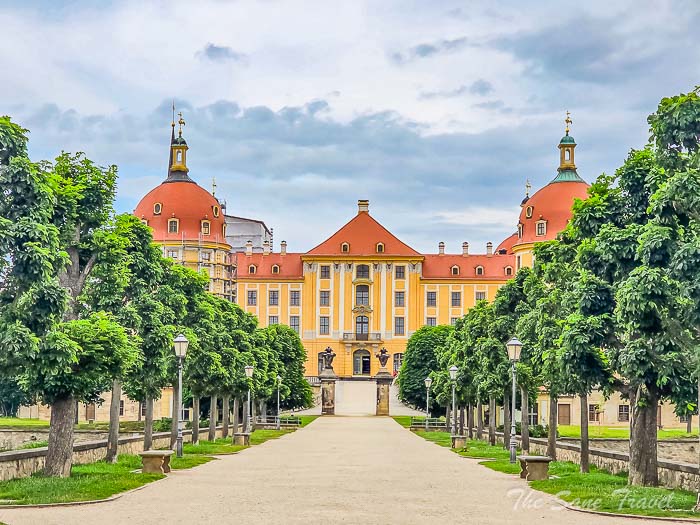
Moritzburg Castle
Moritzburg Castle is regarded as one of the most stunning moated castles in the region. Originally built in 1542 as a hunting lodge for Duke Maurice, it was later transformed into a stunning Baroque castle by Augustus the Strong. The castle houses a remarkable collection of hunting trophies, intricate gilt leather tapestries, and the impressive Feather Room, which displays over a million colourful feathers. The interior showcases lavish Baroque furnishings from Augustus the Strong's era, with many rooms dedicated to courtly hunting themes.
Elector Augustus the Strong had ambitious plans for Moritzburg Castle. From 1723 onwards, significant efforts were made to transform it from a Renaissance structure into a Baroque hunting and pleasure palace. The Elector planned to host lavish feasts and hunts at the castle, envisioning a "Temple of Diana" surrounded by exotic animal enclosures housing lions, cheetahs, and European bison. Skilled Saxon craftsmen and artists collaborated to furnish the interiors of the seven halls and over 200 rooms. However, the project was left unfinished following Augustus the Strong's death. The castle's collection of red deer antlers is highly significant, with the largest display located in the dining room. The collection comprises 71 trophies, most of which are between 270 and 400 years old and were either purchased or received as gifts. 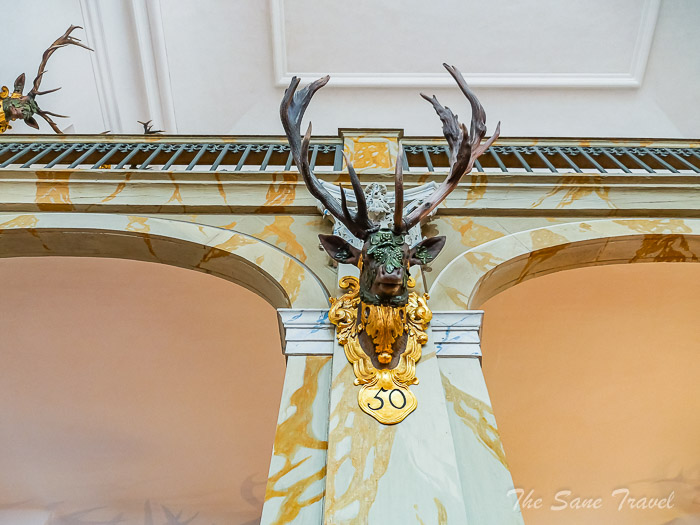
The castle gardens were designed in the French style but were never completed due to the death of Augustus the Strong. 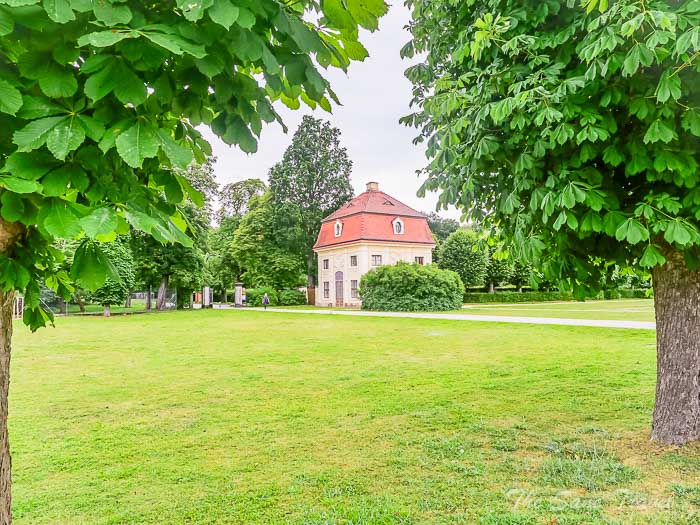
After visiting Moritzburg Castle, make sure to return to the bus stop in time to catch bus M directly to Meissen. Check the bus schedule beforehand, as bus M only runs five times a day during the summer season. Despite its limited frequency, taking bus M can save you at least an hour compared to returning to Dresden first and then travelling to Meissen, which would take around 1.5 hours. The 16-kilometre ride to Meissen Rossmarkt on bus M takes approximately 35 minutes.
Unveiling Meissen
Nestled on the Elbe River just downstream from Dresden, Meissen is a small town renowned for its porcelain production. Its history dates back to 929, when Heinrich I built a castle overlooking the river. Albrechtsburg Castle, the first castle in Germany built for residential purposes, remains one of Meissen's most prominent landmarks. Often referred to as "the cradle of Saxony," the castle played a crucial role in establishing the Wettin dynasty's control over the region that later became the Free State of Saxony. In 1423, the town became a royal seat, further cementing its historical significance. The Gothic cathedral adjacent to the castle serves as a reminder of this period. In 1709, Augustus the Strong founded the Meissen Porcelain Manufactory, the first of its kind in Europe. Today, the MEISSEN® trademark, featuring two crossed blue swords, represents some of the finest porcelain creations in the world. The town also boasts romantic courtyards, craft shops, and the impressive Church of Our Lady near the late-Gothic town hall. Situated in Saxony's wine-growing region, Meissen offers visitors the chance to enjoy local produce in charming wine bars. After the Second World War, Meissen was largely spared from damage and later became part of East Germany. Following German reunification, the town underwent restoration and has since become a popular tourist destination, offering a more relaxed and peaceful atmosphere compared to larger cities.
After arriving at the Rossmarkt bus stop in Meissen, take time to explore the old town as you make your way to Albrechtsburg Castle.
Old town
Meissen's historic old town is filled with cobbled alleys, picturesque townhouses, and romantic courtyards that reflect over 1,000 years of the city's rich history. Nestled beneath the castle, the historic centre features well-preserved Renaissance townhouses, a late-Gothic guildhall, traditional craft shops, cosy wine bars, and the Church of Our Lady.
Frauenkirche
The Frauenkirche, or the Church of Our Lady, overlooks Market Square with its distinctive octagonal Baroque steeple. This steeple houses the world's first carillon made of Meissen porcelain, which plays six times daily at 06:30, 08:30, 11:30, 14:30, 17:30, and 20:30. The church itself, a late-Gothic hall church with three naves, has been a defining feature of Meissen's skyline for over 500 years. The current church structure was completed in the late 15th century and includes an altar dedicated to the Virgin Mary.
Walk up the hill towards the castle gate, but before going inside, turn right to enjoy lunch on the Böttgerstube restaurant's panoramic terrace.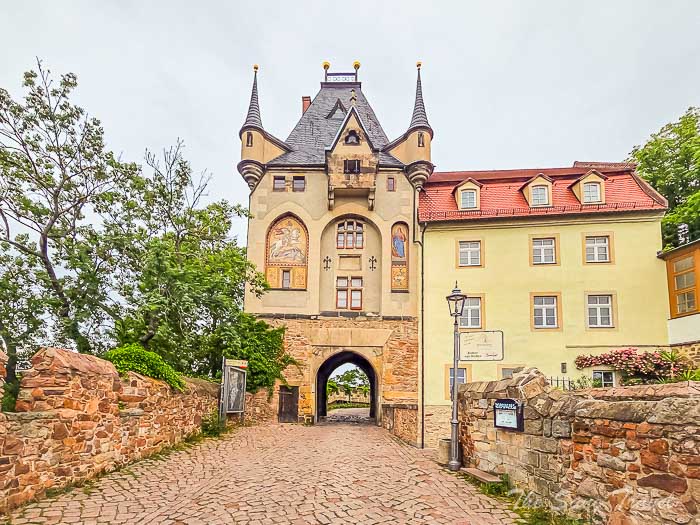
Lunch at Böttgerstube restaurant's panoramic terrace
The panoramic terrace, also known as the "Balcony of Meissen," offers stunning views over Meissen and the Elbe Valley, including its vineyards. It is a perfect spot to enjoy a meal, a cold drink, or a glass of wine under the shade of ancient chestnut trees. 
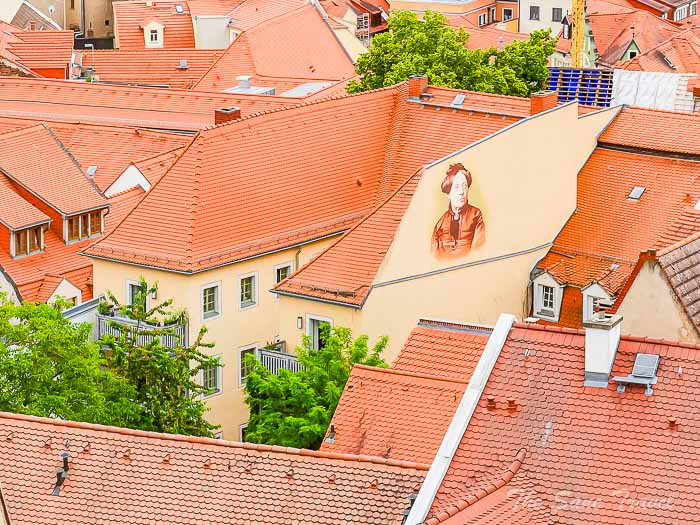
Albrechtsburg Castle
Albrechtsburg Castle, a late-Gothic structure overlooking the Elbe River, was built between 1470 and 1480 by the master builder Arnold of Westphalia.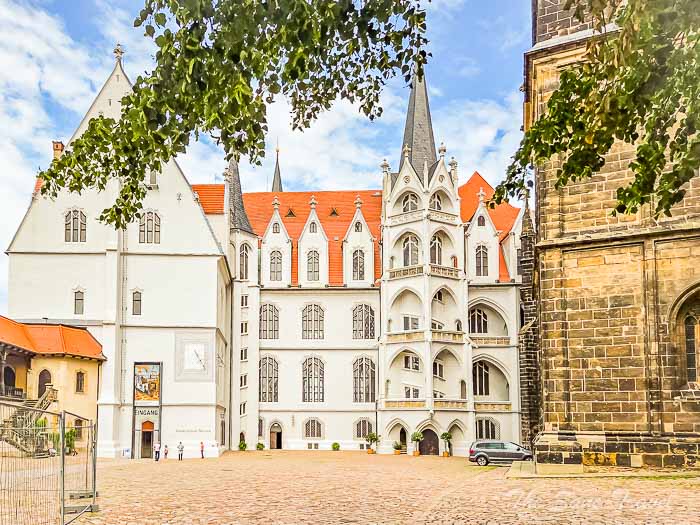 It was intended as the home of Saxon rulers Ernst and Albrecht von Wettin. However, the rulers relocated to Dresden before it could be used for its original purpose. Despite this, the castle's design was ground-breaking, and it is considered the first residential castle in German history. In the 18th century, it became a state porcelain manufactory and remained so until the late 1800s, when renovations began. During the Second World War, the castle was used to store artworks from Dresden. After German reunification, it was transformed into a museum. Extensive restoration work has since been carried out to return the castle to its original Gothic appearance and repair damage sustained during its time as a factory. Today, the castle houses a museum with fine collections, particularly of porcelain. Its interior is decorated with historic frescoes depicting scenes from Saxon history and the Wettin dynasty, some of which were uncovered during restoration efforts in the 19th and 20th centuries.
It was intended as the home of Saxon rulers Ernst and Albrecht von Wettin. However, the rulers relocated to Dresden before it could be used for its original purpose. Despite this, the castle's design was ground-breaking, and it is considered the first residential castle in German history. In the 18th century, it became a state porcelain manufactory and remained so until the late 1800s, when renovations began. During the Second World War, the castle was used to store artworks from Dresden. After German reunification, it was transformed into a museum. Extensive restoration work has since been carried out to return the castle to its original Gothic appearance and repair damage sustained during its time as a factory. Today, the castle houses a museum with fine collections, particularly of porcelain. Its interior is decorated with historic frescoes depicting scenes from Saxon history and the Wettin dynasty, some of which were uncovered during restoration efforts in the 19th and 20th centuries.
Cathedral
The Gothic cathedral in Meissen is a prominent feature of the town's skyline, with a dark patina covering its originally pale sandstone exterior. 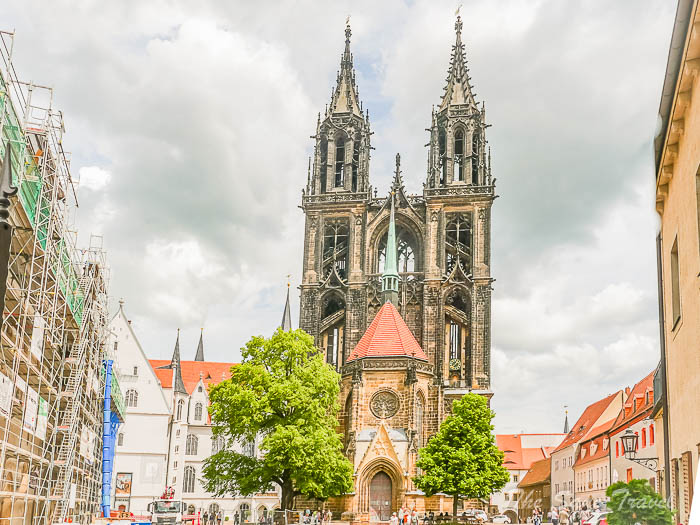
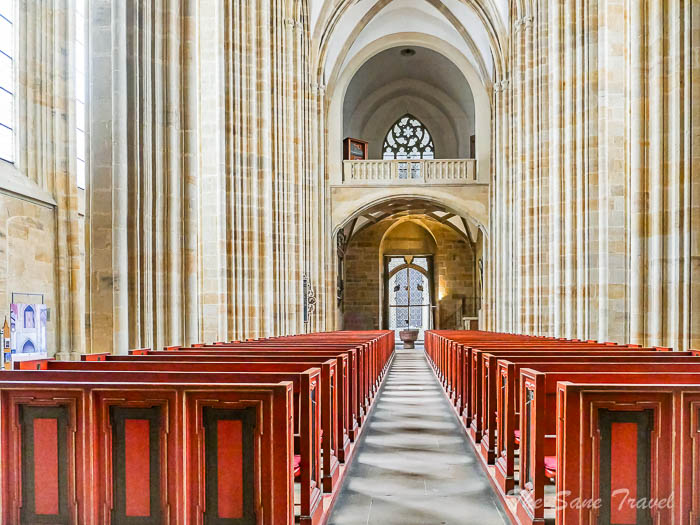
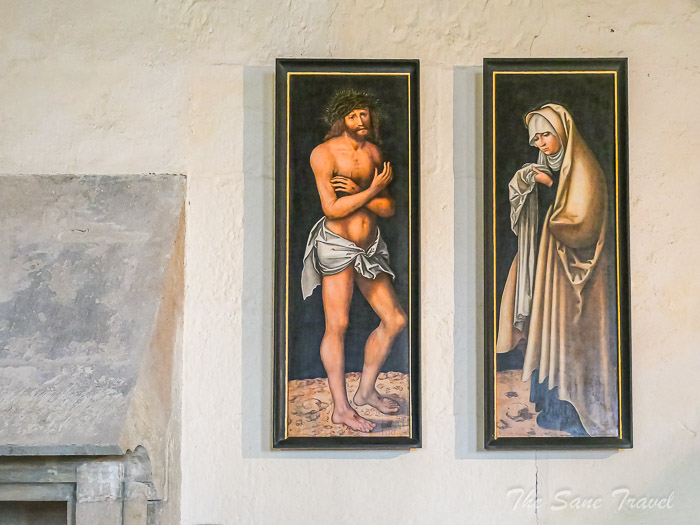
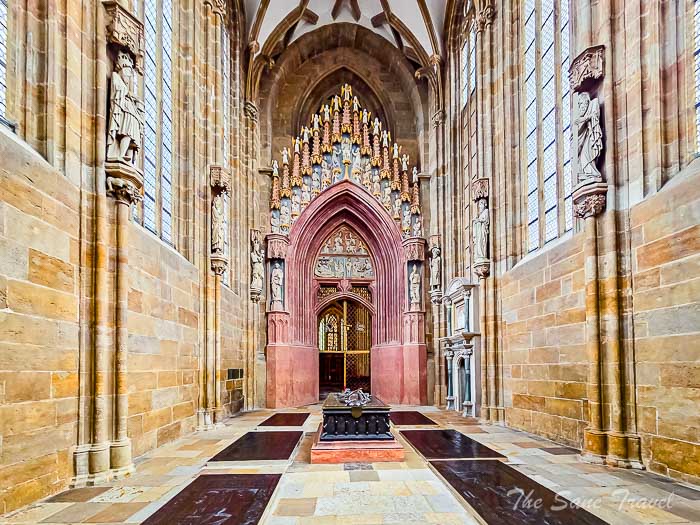
Panorama Elevator
If you have arrived at Castle Square on foot and want to return by a different route, you can take the panoramic elevator down. The elevator descends 33 metres, and the ride takes about 40 seconds. 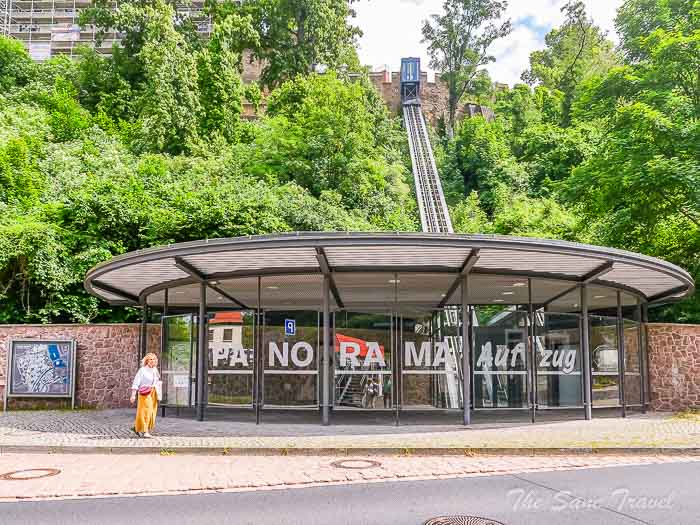
Meissen Porcelain Manufactory
A visit to Meissen would not be complete without seeing the Meissen Porcelain Manufactory. Originally located in Albrechtsburg Castle in the early 18th century, the manufactory was relocated to the Triebischtal district 150 years later. The town's association with porcelain dates back to the early 18th century, when the alchemist Johann Friedrich Böttger played a pivotal role in uncovering the secrets of porcelain production. The Elector of Saxony announced the discovery in 1710 and established a porcelain manufactory in the Albrechtsburg. Meissen porcelain, marked with the famous two crossed blue swords trademark adopted in 1720, soon became highly sought after by the wealthy. Today, the factory in Triebischtal is owned by the Free State of Saxony and houses the Museum of Porcelain, which offers visitors a journey through time and showcases fine craftsmanship.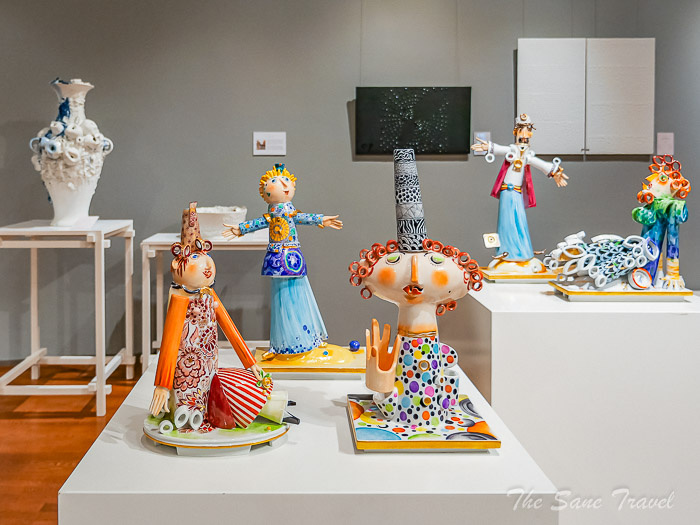

You can now catch the S-Bahn S1 back to Dresden from Meissen Triebischtal station.
Practical details
Bus M, operating from April 2 to October 31, provides a convenient way to travel from Moritzburg to Meissen. The S-Bahn S1 connects Dresden to Meissen via three stations: Meissen Triebischtal, Meissen Altstadt, and Meissen Hauptbahnhof. Bus E runs every 60 minutes from April to October, linking Albrechtsburg, Meissen Cathedral, Market Square, and the Meissen Porcelain Manufactory. These buses have 13 seats, including one wheelchair space.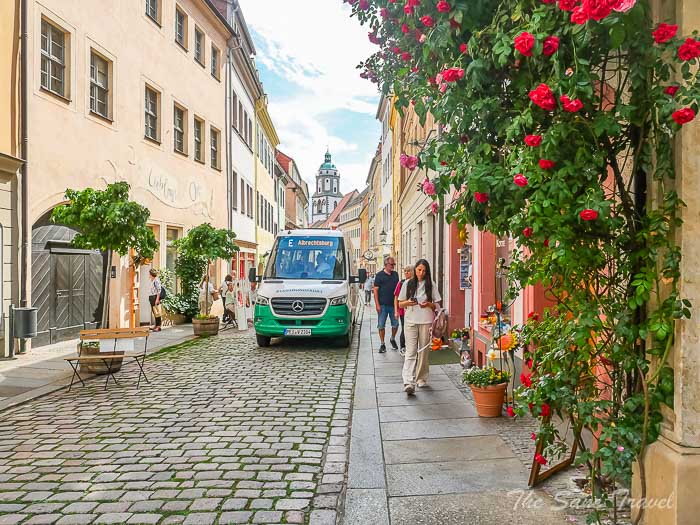
Good to know
Electors were a group of princes established in the 13th century who were responsible for choosing the German king until 1806. An elector was a German prince entitled to participate in the election of the Holy Roman Emperor, the leader of a loosely connected alliance of German states and city-states. Originally, there were seven electors: the Archbishops of Cologne, Mainz, and Trier; the Duke of Saxony; the Count Palatine of the Rhine; the Margrave of Brandenburg; and the King of Bohemia.
Like it? Pin it!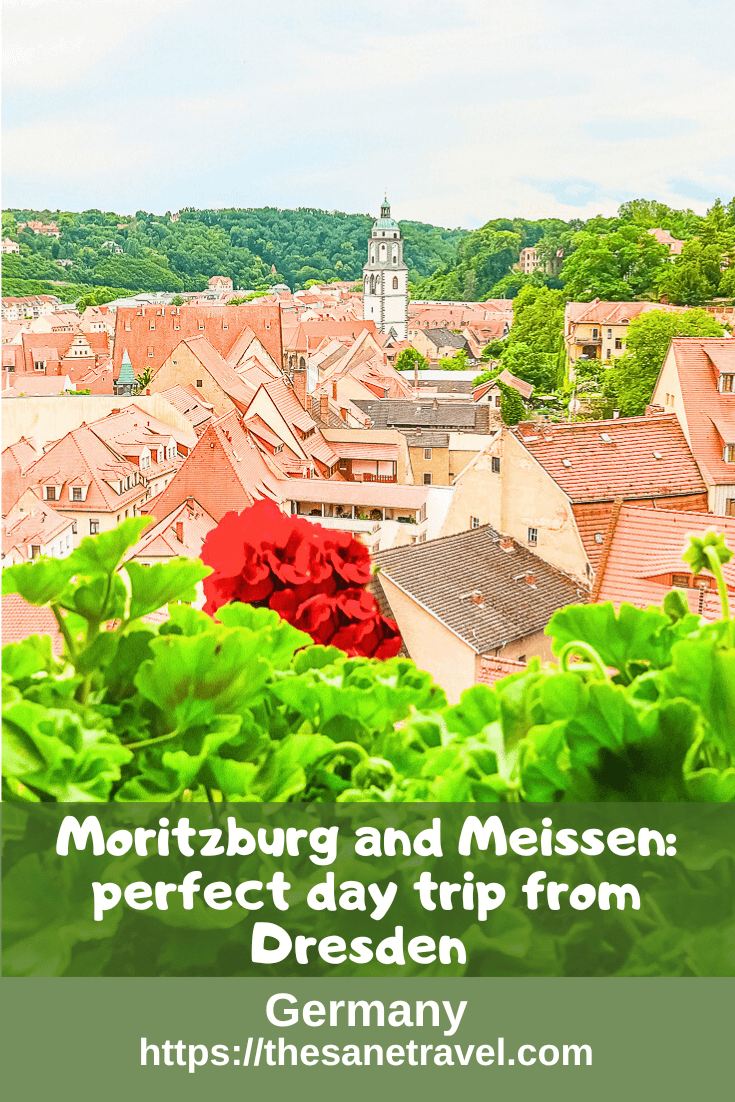
What did you think? Have you been to Dresden? I would love to hear from you, so please add your comment below.
Author: Anita Sane
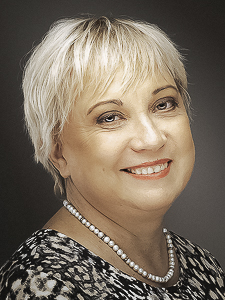
About the author
Anita is a part-time traveller, passionate photographer and a retired career woman from Latvia, travelling mostly solo for more than 15 years. She is a skilled travel planner who plans and executes her travels by herself. Anita wants to show you how to travel the world and open your mind to new experiences. Follow her on Facebook, Instagram, Pinterest, Twitter and Bloglovin.


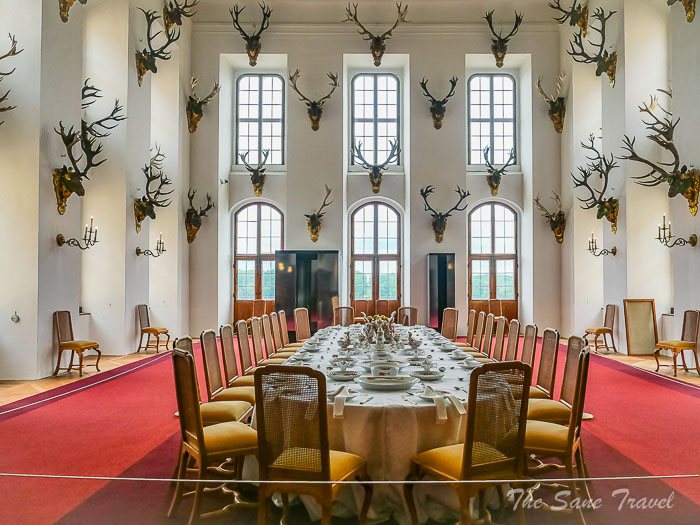
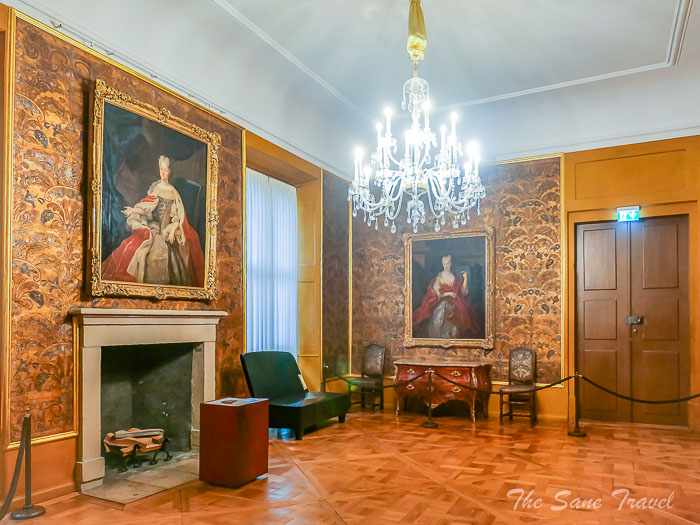

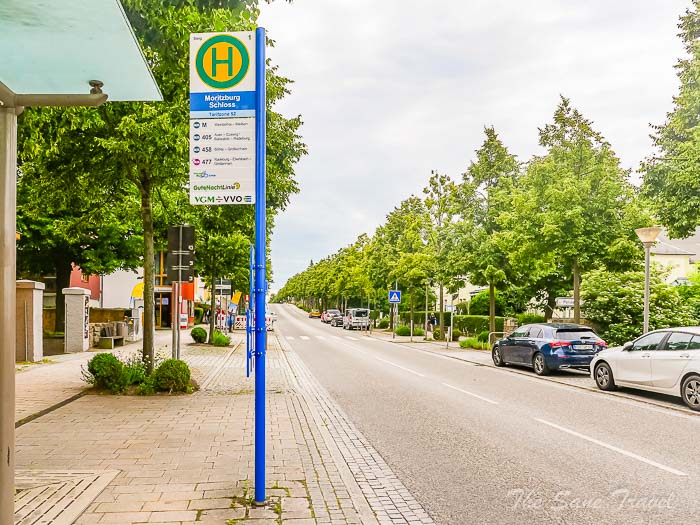
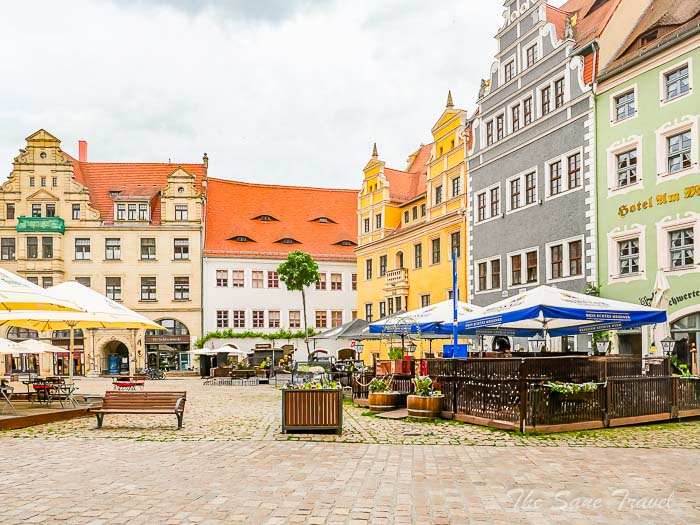

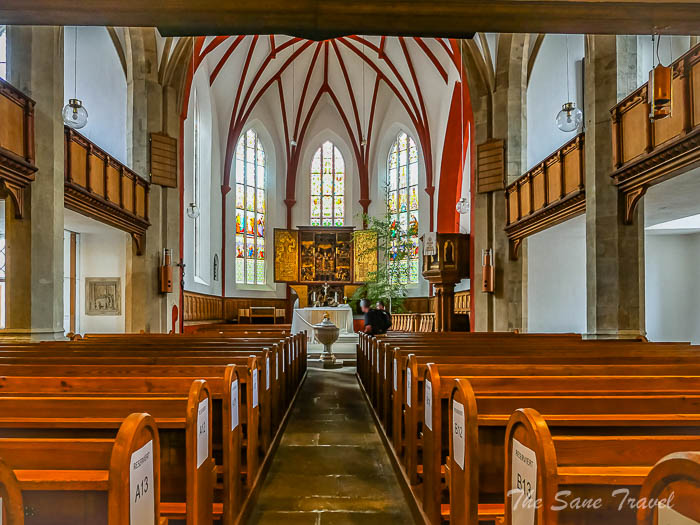
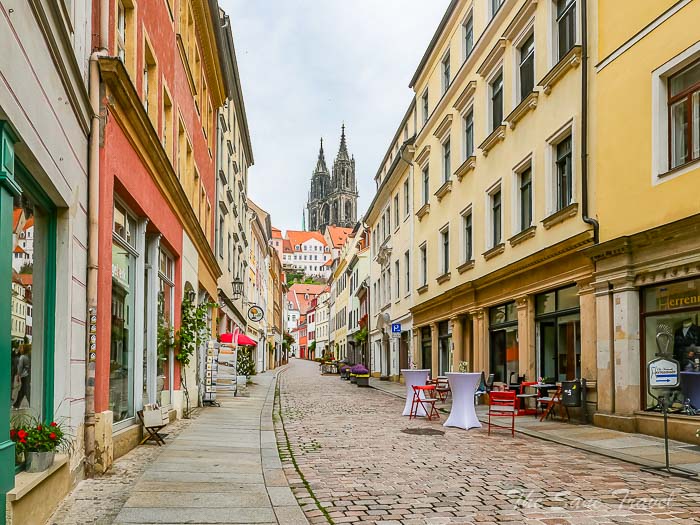
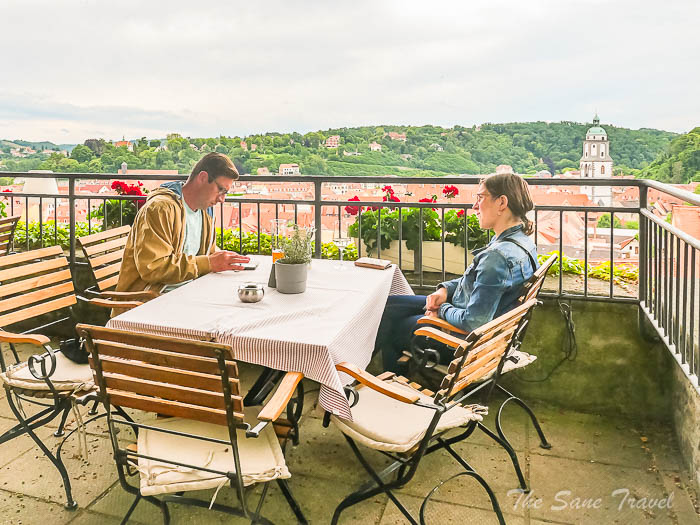


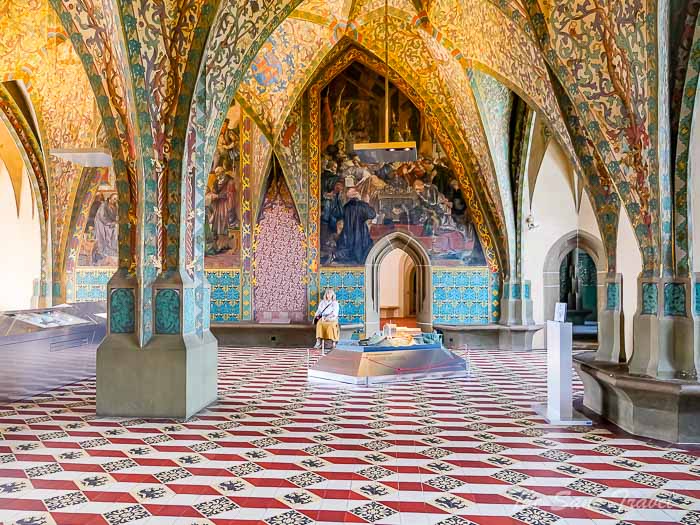


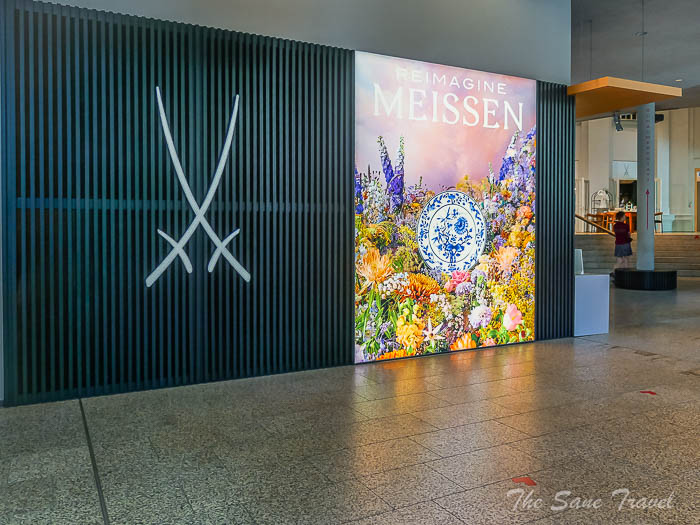

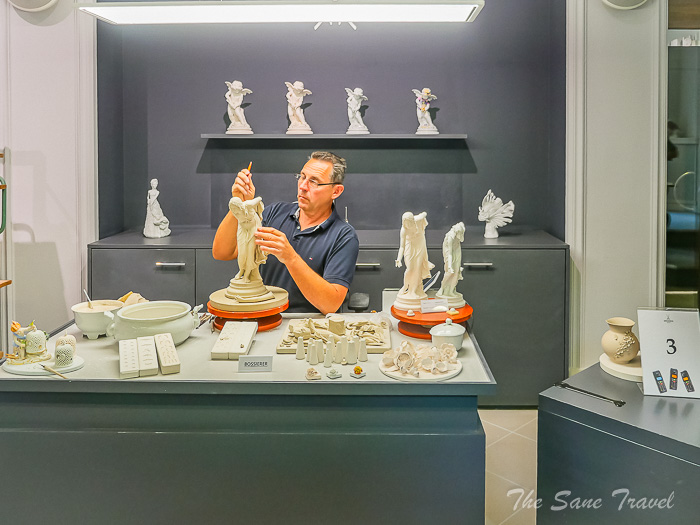


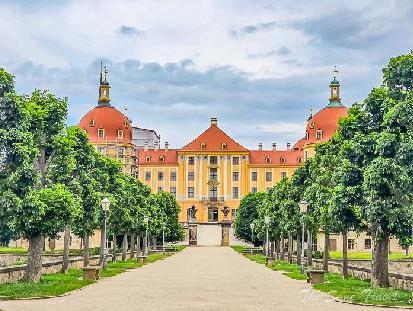
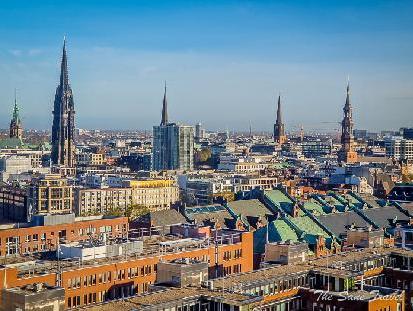
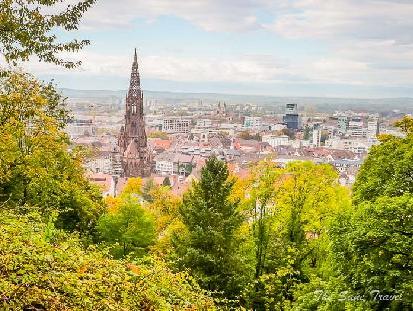
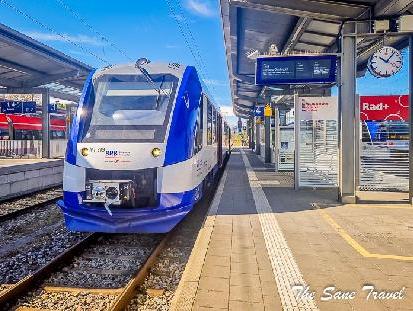
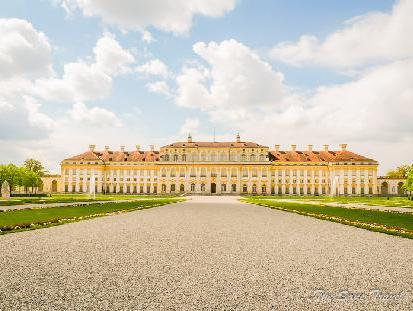
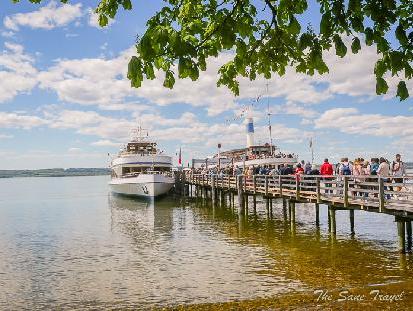
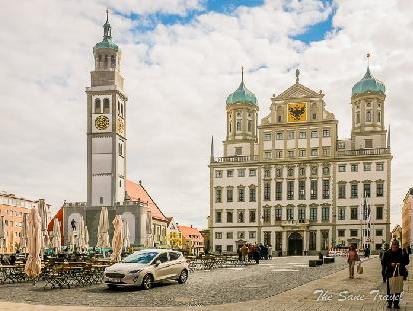
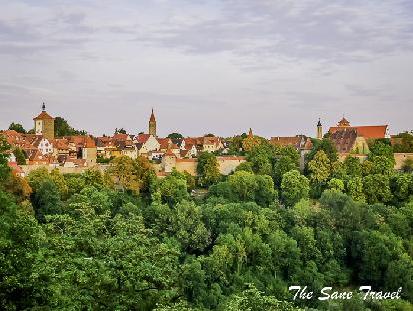
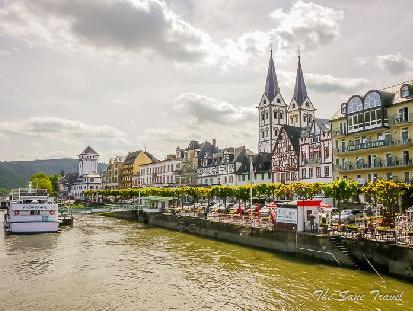

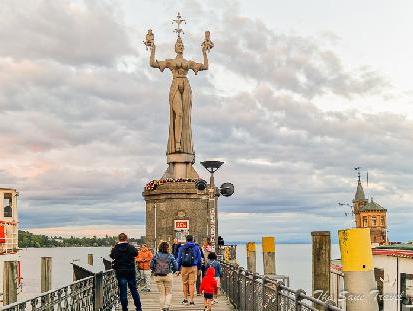
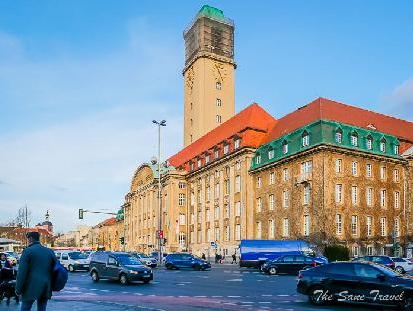

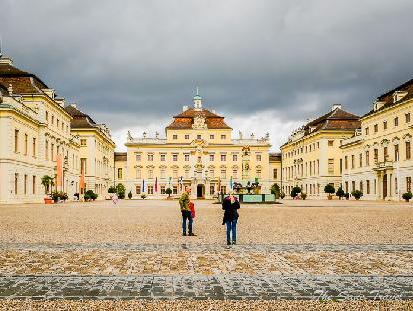
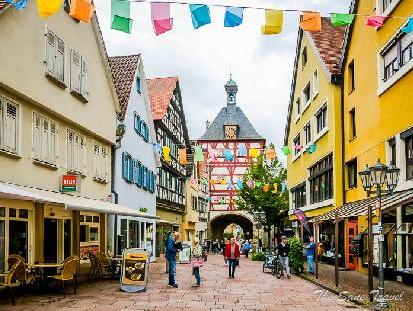
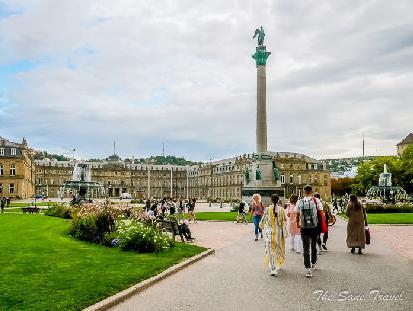
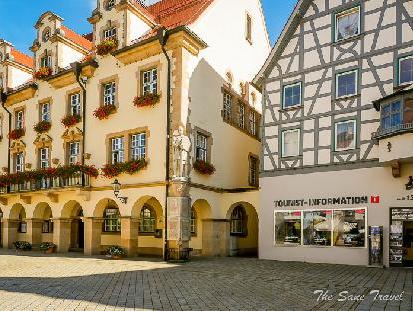
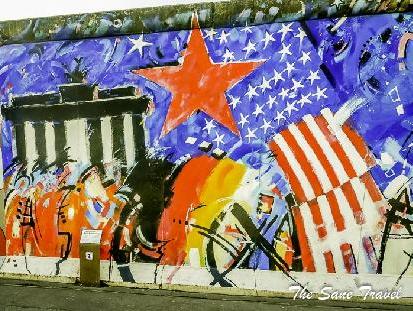
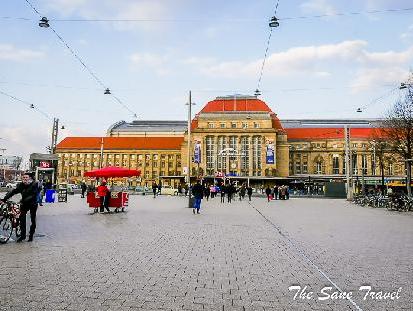
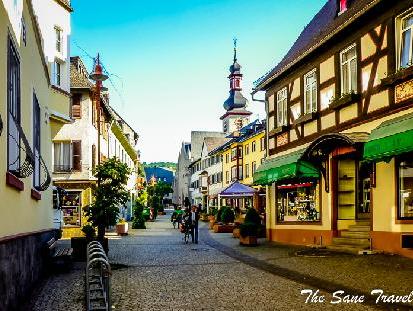
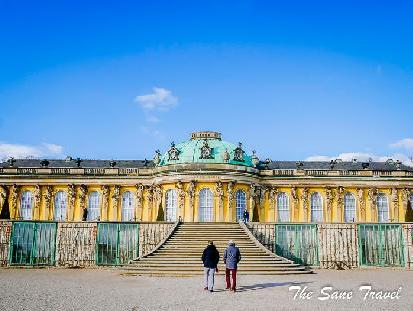
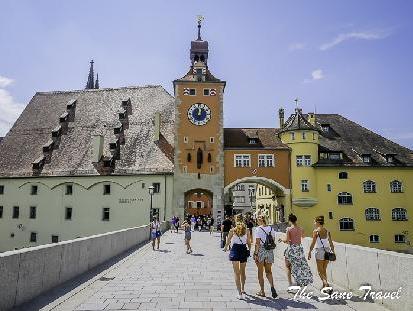
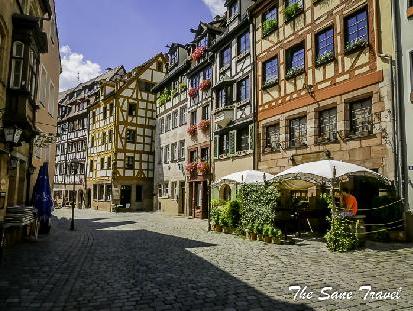
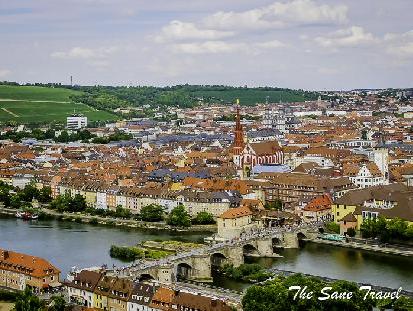
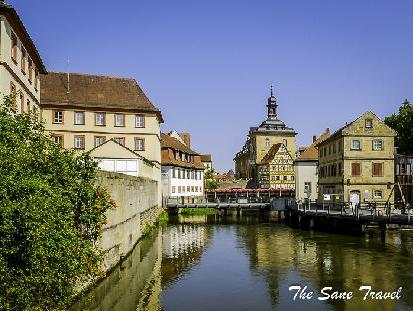
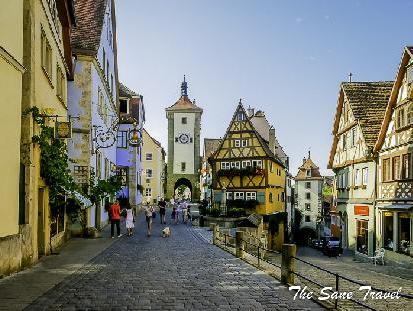
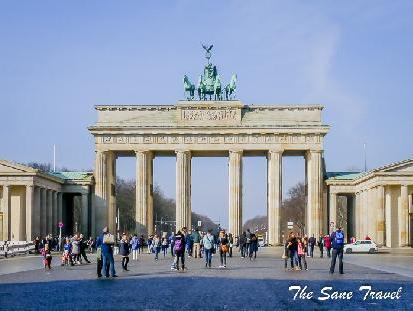

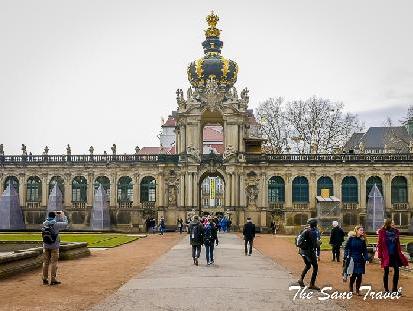
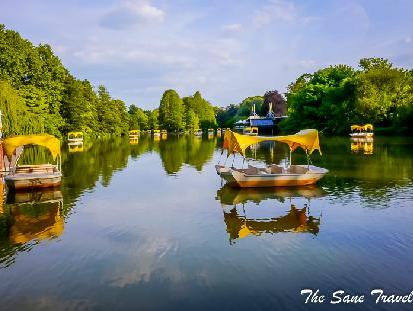
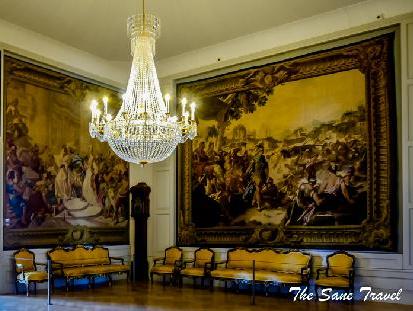
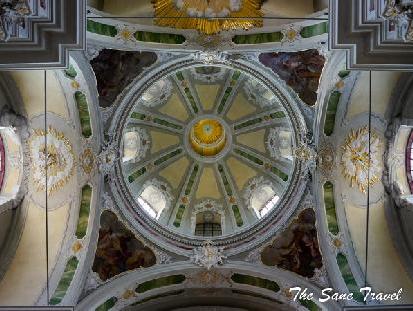
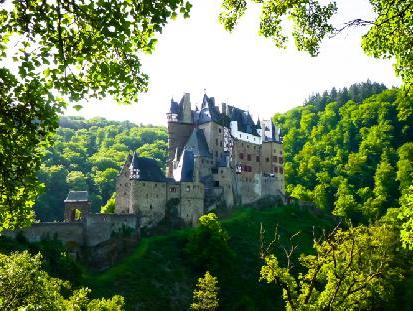
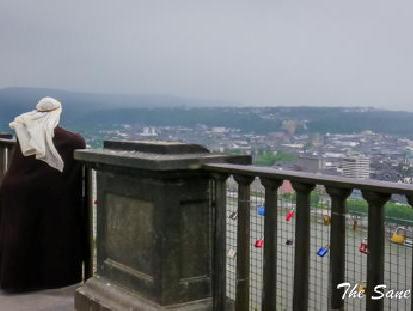
Report
My comments